Up to 45 percent of the diet formulation
Proper feed formulation for Penaeus monodon larvae is critical. The nutritional requirements of this species, like those of other shrimp species, can vary with environmental factors, characteristics of the rearing system, and other variables. In addition, the composition of feed ingredients from different sources can vary due to their different origins.
Soybean meal is increasingly being used in aquaculture feeds due to its nutritional quality and lower cost than animal protein sources. Soybean meal has been used in diets for several crustaceans like lobsters, freshwater prawns, and several penaeid shrimp species, including P. setiferus, P. stylirostris and P. monodon juveniles.
Feeding trial
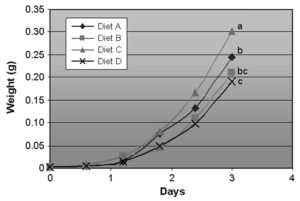
A 30-day feeding trail was carried out to determine the effects of incorporating different levels of indigenous defatted soybean meal into the diet of P. monodon postlarvae (PL). Wild PL were collected and acclimated, then stocked at 20 PL per liter into eight plastic, 13-l tanks with filtered seawater.
Four test diets with approximately 40 percent protein and 10 percent fat were prepared using 25, 35, 45 and 55 percent defatted soybean meal, with a corresponding reduction in fishmeal. These diets were assigned into four treatment groups. Feeds were presented four times a day with rations calculated at 20 percent of the body weight of the animals. Water was exchanged at 40 percent daily, and adequate aeration was maintained.
Results
Significantly higher (P < 0.05) mean weights (0.301 ± 0.045 grams) were recorded for the group fed diet C, which contained 45 percent soybean meal (Fig. 1). The lowest mean weights (0.192 ± 0.023 grams) resulted for the group fed diet D, with 55 percent soybean meal. Survival rates were 78.8 percent for diet A (25 percent soybean meal), 74.2 percent for diet B (35 percent soybean meal), 80.8 percent for diet C, and 75 percent for diet D. Feed-conversion ratios were 1.10 for diet A, 1.06 for diet B, 1.13 for diet C and 1.04 for diet D.
Conclusion
Results of this study indicated that local defatted soybean meal can be incorporated into the diet of P. monodon postlarvae at up to 45 percent of the diet formulation without significant decreases in growth rates.
(Editor’s Note: This article was originally published in the April 2003 print edition of the Global Aquaculture Advocate.)
Now that you've reached the end of the article ...
… please consider supporting GSA’s mission to advance responsible seafood practices through education, advocacy and third-party assurances. The Advocate aims to document the evolution of responsible seafood practices and share the expansive knowledge of our vast network of contributors.
By becoming a Global Seafood Alliance member, you’re ensuring that all of the pre-competitive work we do through member benefits, resources and events can continue. Individual membership costs just $50 a year.
Not a GSA member? Join us.
Authors
-
H. Zamal
Institute of Marine Sciences
University of Chittagong
Chittagong, Bangladesh -
Y.S.A. Khan
Institute of Marine Sciences
University of Chittagong
Chittagong, Bangladesh -
M.J. Alam
Institute of Marine Sciences
University of Chittagong
Chittagong, Bangladesh
Related Posts
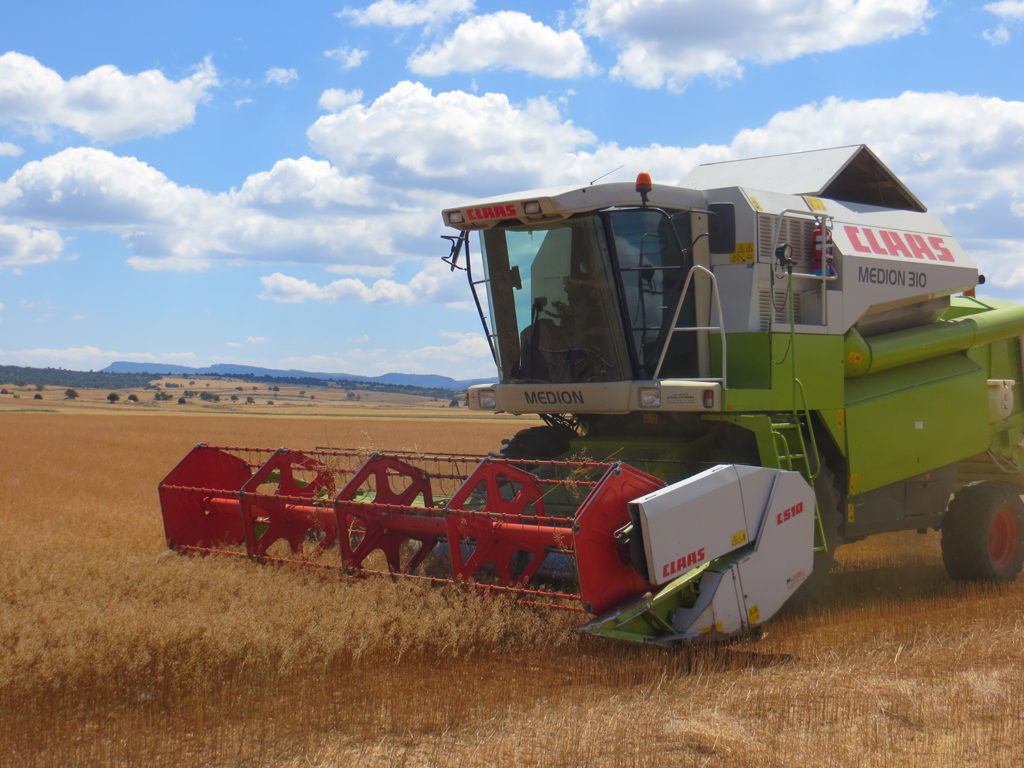
Aquafeeds
Canada eagerly looks to camelina oil as a fish oil alternative
Grown worldwide, Camelina sativa is a tiny seed used for human consumption that also has big potential for driving the “green” economy.
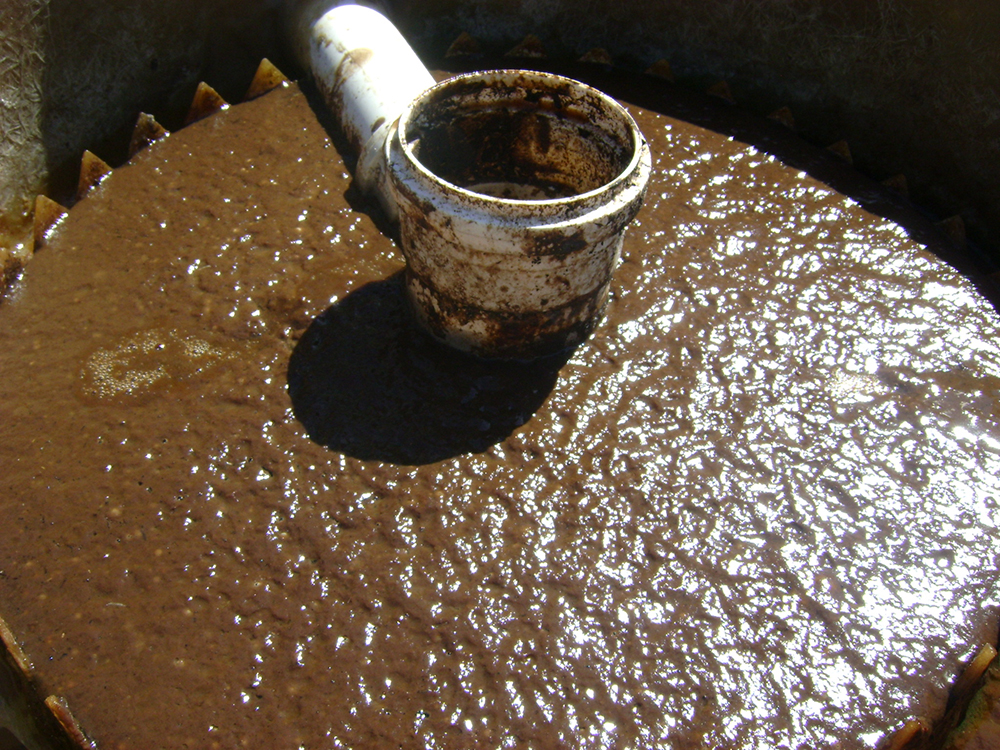
Aquafeeds
Crude protein and lipid from biofloc meals from an activated sludge system
A study compared the bioavailability of crude protein and lipid from biofloc meals generated with an activated sludge system using two water sources: wastewater from shrimp experimental culture (BFL-W) and, artificially, using clean seawater (BFL-C).
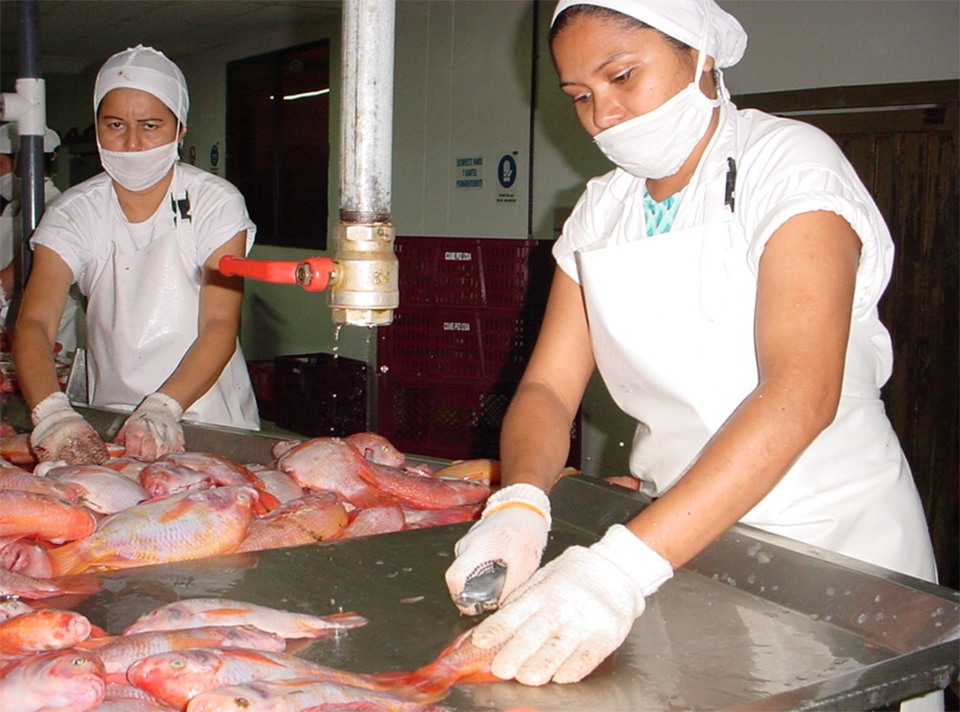
Health & Welfare
Evaluating tilapia processing silage in Pacific white shrimp diets
Study evaluates growth of Pacific white shrimp in various conditions and fed diets with different inclusion levels of tilapia processing waste silage.
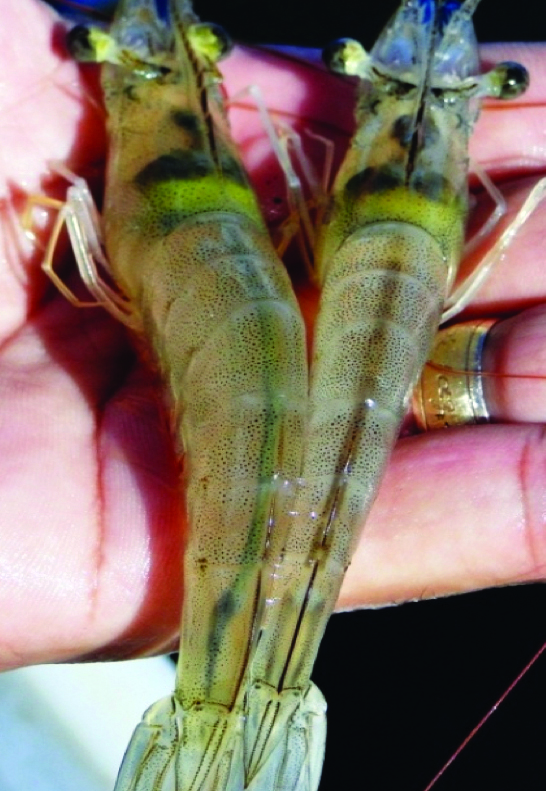
Health & Welfare
Dietary effects of fish oil, soy lecithin on shrimp in clear and greenwater systems
A 56-day trial conducted in greenhouse-enclosed clearwater and greenwater systems compared tissue variations among shrimp fed varied dietary levels of fish oil and soy lecithin.


